Imagine that you lead a small company. How can you ensure that it focuses on what it can do brilliantly, rather than spread itself too thinly? This article describes an exercise that can be used to clarify your future strategy.
Clarifying What The Company Can Do,
Maybe Can Do and Probably Can’t Do
Small companies often start by offering a specialised service. Some find a niche and develop it to become successful.
Some companies find that they spread themselves across several fields, however, and become unfocused. This can be exacerbated by individuals who want to pursue their own specialities.
The creative process often involves opening up and trying lots of things. After a while, however, it is important to close down, focus on a few things and do these brilliantly.
Imagine you lead a small company that wants to refine its focus. Gather people together, give each person a pack of Post-it Notes and ask them to do the following exercise.
Bearing in mind the company’s strengths, invite them to describe what they believe the company: a) Can Do; b) Maybe Can Do; c) Probably Can’t Do. People are also to give reasons for their ideas.
Invite each person to reflect on these themes and then write as many ideas as they wish under each of the headings. They are to write one idea per Post-it, but can write as many ideas as they wish.
When thinking about what the company can do, remind them to focus on what it may be able to do brilliantly. They are to write: “We can …” A person may write, for example:
“We can create pioneering products – that are also profitable – in the following areas …
“We can gain the reputation for being trusted advisors with the following kinds of clients …
“We can build a culture that our employees feel enables them to build on their strengths and do great work.”
(The company can, of course, go bankrupt. For the sake of this exercise, however, encourage people to focus on the things it can do well, maybe can do well and probably can’t do well.)
Give people time to complete their writing. They are then to each go up in turn and put their ideas on flip charts that have the following headings.
Concentrating On What
The Company Can Do
Give people an opportunity to discuss the ideas that have been put on the flip charts. After a while, begin focusing more on the things people believe the company can do well. Encourage people to give reasons why they believe it is possible to do excellent work in these areas.
You can then move on to the next stage. Invite people to clarify the strategy for the future. Ask them:
“Looking at the specific things we can do well, which should we focus on to help both our company and our clients to succeed? What will be the benefits of doing these things?”
Explore the various ideas and then make decisions. Settle on the specific areas the team wants to concentrate on in the future.
Looking at each area in turn, encourage people to make crystal clear plans that cover the following themes.
The What: The specific results to achieve.
The Why: The specific benefits of achieving these results.
The How: The specific strategies people can follow to achieve the results.
The Who: The specific people who are responsible for achieving the results.
The When: The specific things that must be achieved and by when.
Small companies often perform best when they concentrate on doing a few things and doing these brilliantly. They must also, of course, be able to do these in a profitable way.
Bearing this in mind, you can summarise the company’s way forward by completing the following exercise. You can then ensure that people focus on what the company can do superbly and deliver success.


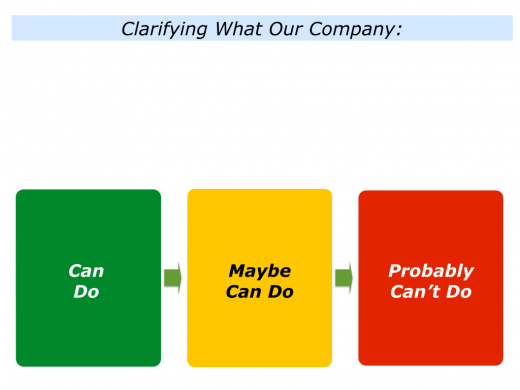
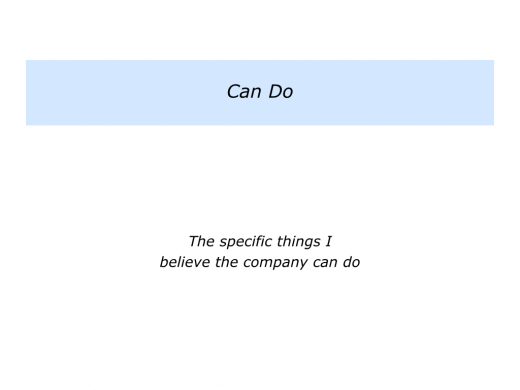
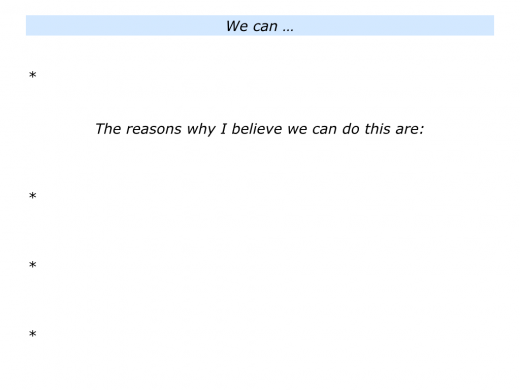
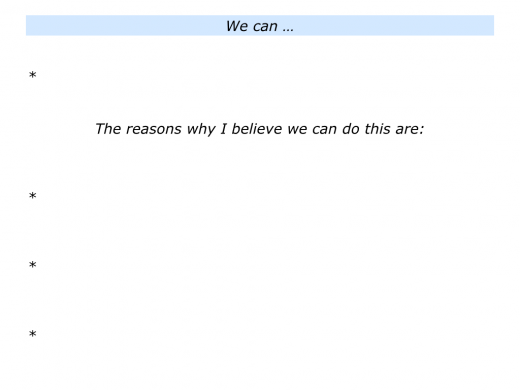
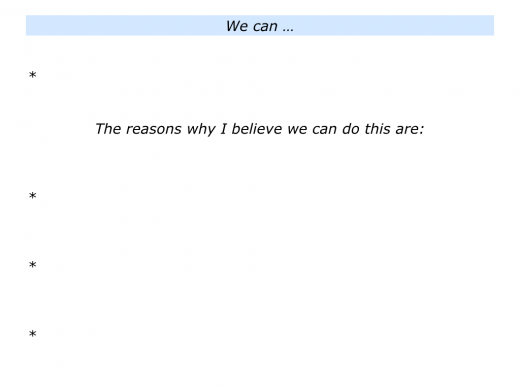
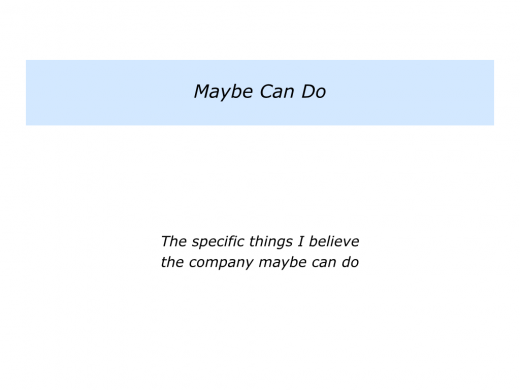
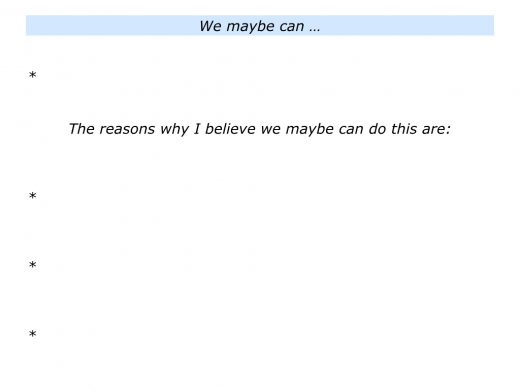
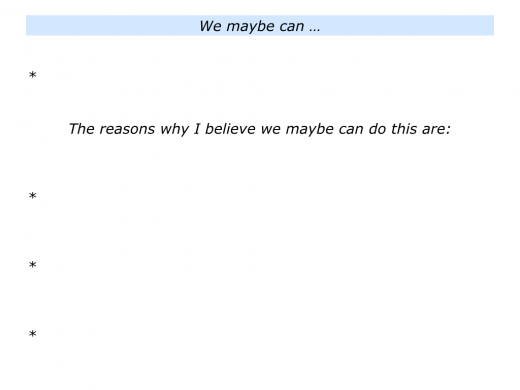
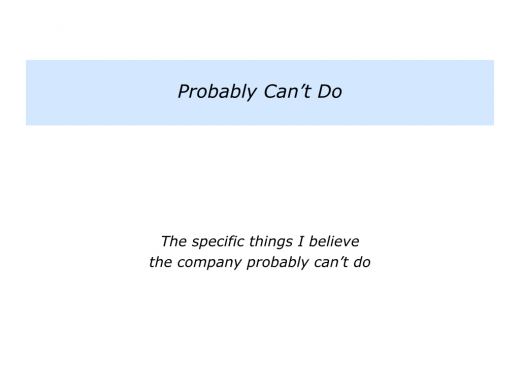
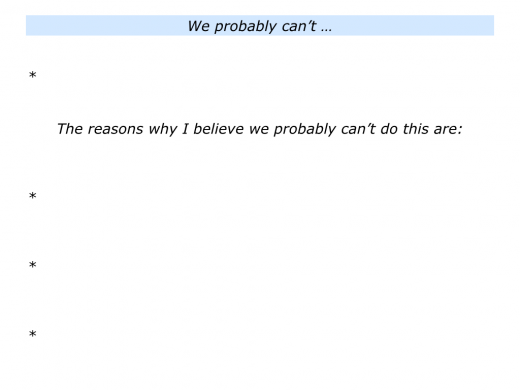
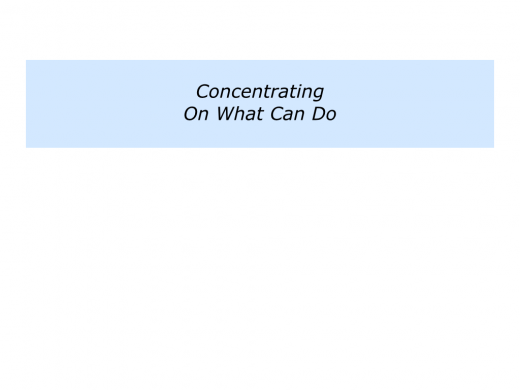
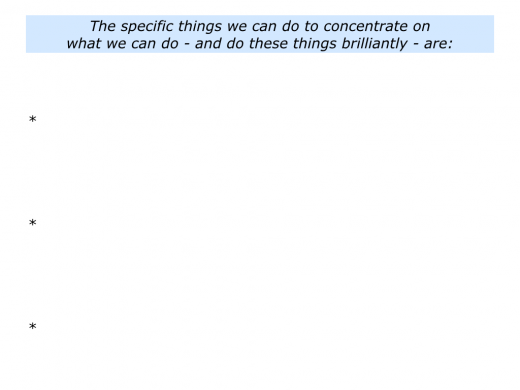
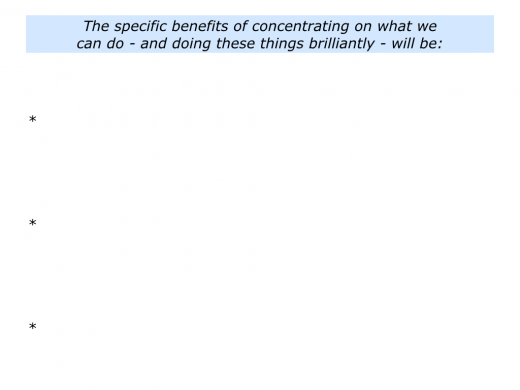




Leave a Reply